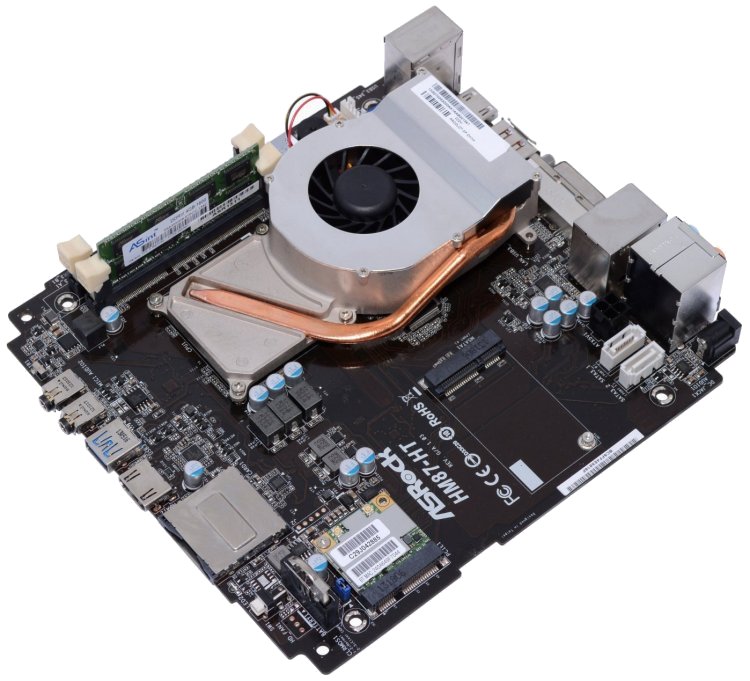Asrock Vision HT 420D Review > Specs & Memory Performance - clapperhavers
Specs &adenylic acid; Memory Performance
| Asrock Vision HT 420D
| Intel Haswell System Specs
|
| AMD APU System Specs
| Intel Ivy Bridge System Spectacles
|

Something we detected right away when dismantling the Asrock Vision HT 420D is that it was fitted with just a single DDR3 memory module. While this provided a 4GB capacity, it didn't allow the Core i5-4200M C.P.U. to take back advantage of its dual-channel store controller.
By alone including unrivaled memory module, Asrock has limited the processor to single-epithelial duct mode. We suspected this would have a major negative impact on performance so we tested the Vision HT 420D in both single and dual-channel modes.

The monophonic contour limited the Asrock Vision HT 420D to meet 10.3GB/s of bandwidth, slower than whatsoever of the desktop systems we utilised for comparison. However once we installed another DDR3 module allowing for dual-channel memory, the throughput soared 70% to 17.5GB/s.

That extra bandwidth doesn't affect the cache performance. While the Core i5-4200M delivered exchangeable L2 squirrel away performance to the AMD A8-7600 (Steamroll), the L1 performance was still well quicker.
Source: https://www.techspot.com/review/773-asrock-vision-ht-420d/page3.html
Posted by: clapperhavers.blogspot.com


0 Response to "Asrock Vision HT 420D Review > Specs & Memory Performance - clapperhavers"
Post a Comment